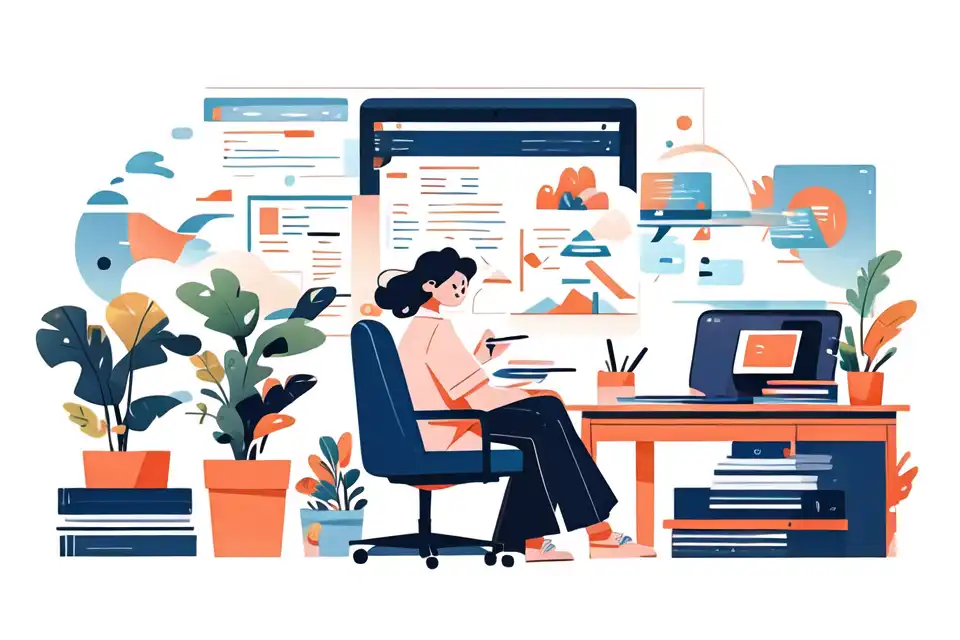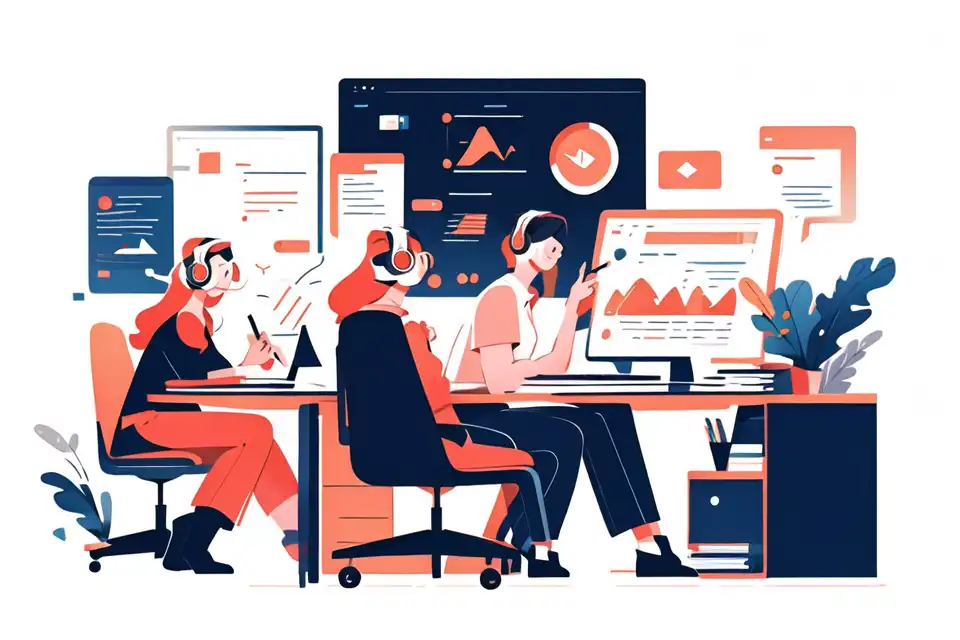How to Say No Professionally
Master the art of professional communication in business settings with expert guidance. Learn how to say no professionally.
Try Lark for Free
Saying no professionally is a delicate art that requires consideration, tact, and empathy. Often, individuals fear that politely refusing a request may harm their professional image or damage relationships. However, learning to decline with diplomacy can lead to increased respect, improved work-life balance, and reduced stress. This comprehensive guide aims to explore the significance of mastering this crucial skill and provide practical examples, step-by-step instructions, and essential do's and don'ts.
The significance of understanding how to say no professionally
Why it Matters in Professional Settings
Impact on Work Relationships
Mastering the art of saying no professionally has a direct impact on work relationships. When done respectfully, it conveys assertiveness while maintaining mutual respect. Clear communication of boundaries can lead to more meaningful and balanced professional relationships.
Maintenance of Professionalism
Saying no professionally is an integral part of maintaining professionalism. It demonstrates integrity, accountability, and ethical conduct. Respectful refusal reflects one's commitment to honesty and transparency in professional interactions.
Asserting Boundaries
Knowing how to say no professionally is crucial for asserting and preserving personal boundaries. It guards against overcommitment, burnout, and undue stress, contributing to a healthier work-life balance.
Use Lark Messenger to elevate your team communication.
Practical examples of dealing with how to say no professionally
Example 1: handling additional work requests
Example 1: handling additional work requests
A Common Scenario: Requested to Take on Additional Work
In this scenario, colleagues or supervisors may approach individuals with additional tasks or projects, believing in their ability to handle more responsibilities.
Errors to Avoid: Overcommitting and Feeling Resentful
Individuals commonly make the mistake of overcommitting to avoid disappointing others, leading to increased stress and frustration.
Ideal Response: "I appreciate the trust in my abilities, but unfortunately, my current workload doesn't allow for additional tasks. Is there a possibility to revisit this in the future?"
Example 2: declining after-hours event invitations
Example 2: declining after-hours event invitations
A Common Scenario: Being Asked to Attend an After-Hours Event
Employees are often invited to after-hours social or networking events, which may conflict with personal commitments.
Errors to Avoid: Being Abrupt or Providing Weak Excuses
Individuals sometimes make the error of declining abruptly or providing vague or invalid excuses.
Ideal Response: "Thank you for thinking of me, but I have a prior commitment. I hope it goes well."
Example 3: refusing personal assistance requests
Example 3: refusing personal assistance requests
A Common Scenario: Request for Assistance on Personal Tasks
Colleagues or friends may seek assistance with non-work-related tasks during office hours.
Common Mistake: Feeling Obligated to Assent or Being Unnecessarily Harsh
Individuals may feel obligated to comply or respond with unnecessary harshness while declining.
Ideal Expression: "I must focus on work-related matters during office hours, but I'm confident you will handle it well."
Example 4: negotiating realistic project timelines
Example 4: negotiating realistic project timelines
A Common Scenario: Underestimated Timelines for a Project
Team members or supervisors may propose unrealistic deadlines for projects or tasks.
Errors to Avoid: Agreeing to Unrealistic Deadlines and Overcommitting
Individuals may succumb to the pressure and accept unfeasible timelines, leading to compromised quality and increased stress.
Ideal Response: "I understand the urgency but to ensure quality, we may need to adjust the timeline. Is that feasible?"
The consequences of not knowing how to say no professionally
Impact on Mental Well-being
Heightened Stress Levels
Inability to say no professionally often leads to heightened stress levels. Overcommitting and feeling overwhelmed can detrimentally impact an individual's mental well-being.
Increased Feelings of Overwhelm
When individuals struggle to decline requests respectfully, they often find themselves overburdened, leading to increased feelings of overwhelm.
Potential for Burnout
Continually saying yes and being unable to assert boundaries can lead to burnout, affecting an individual's productivity and overall well-being.
Learn more about Lark x Communication
Use Lark Messenger to elevate your team communication.
Polished methods of phrasing how to say no professionally
Politeness in Refusal
Mastering the art of saying no professionally encompasses employing well-crafted language that conveys respect and empathy, ensuring effective communication.
-
Utilizing Positive Language:
- Use affirmative language that focuses on conveying appreciation and positivity despite the refusal.
-
Redirecting the Request:
- Politely redirect the request by emphasizing current commitments and the unavailability to take on additional tasks or responsibilities.
-
Acknowledging Appreciation:
- Acknowledge any appreciation or recognition conveyed within the request while respectfully declining.
Do's and don'ts when you don't know how to say no professionally
The Do's
-
Expressing Gratitude:
- Express gratitude for the opportunity while respectfully declining the request to convey appreciation.
-
Setting Clear Boundaries:
- Clearly communicate personal or professional limitations to establish and reinforce boundaries.
-
Offering Alternatives:
- Suggest alternate solutions or compromises where possible to exhibit a collaborative approach.
The Don'ts
-
Being Abrupt or Rigid:
- Avoid abrupt or rigid refusals, as they may lead to misunderstandings or strained professional relationships.
-
Over-Apologizing:
- Refrain from over-apologizing when declining, as it may convey uncertainty and weaken the refusal.
-
Over-Explaining:
- Avoid over-explaining the reasons for refusal, as it may dilute the clarity and firmness of the response.
Conclusion
In conclusion, mastering the art of saying no professionally is essential for fostering healthy professional relationships, maintaining work-life balance, and preserving mental well-being. By understanding the significance of this skill, applying the provided practical examples, following the step-by-step instructions, and adhering to the outlined do's and dont's, individuals can navigate professional interactions with confidence and integrity.








